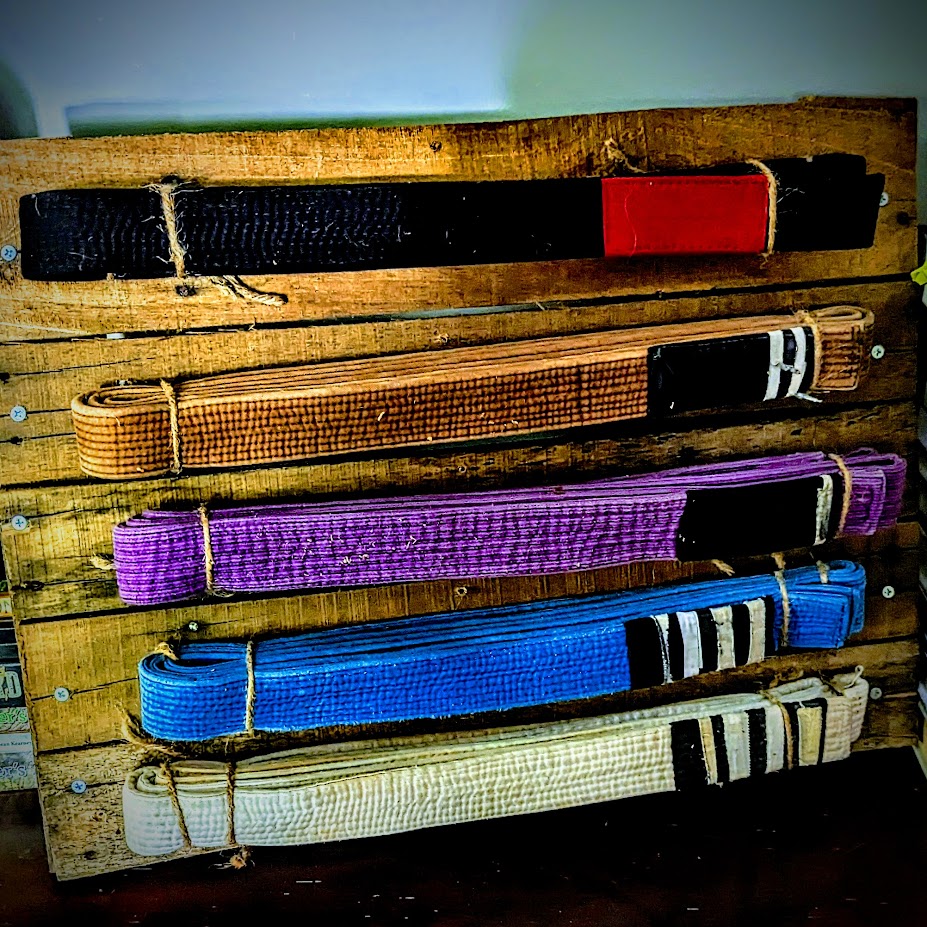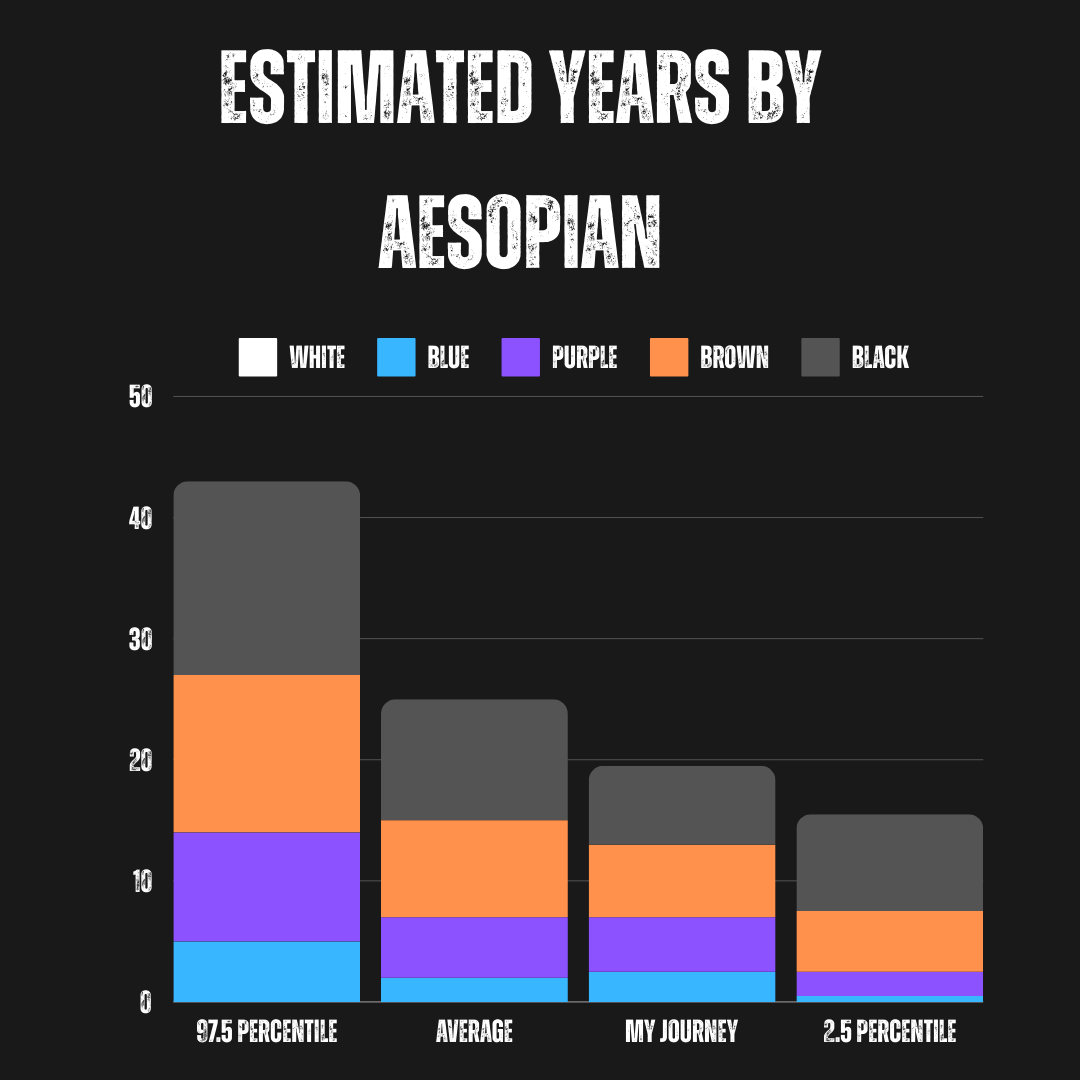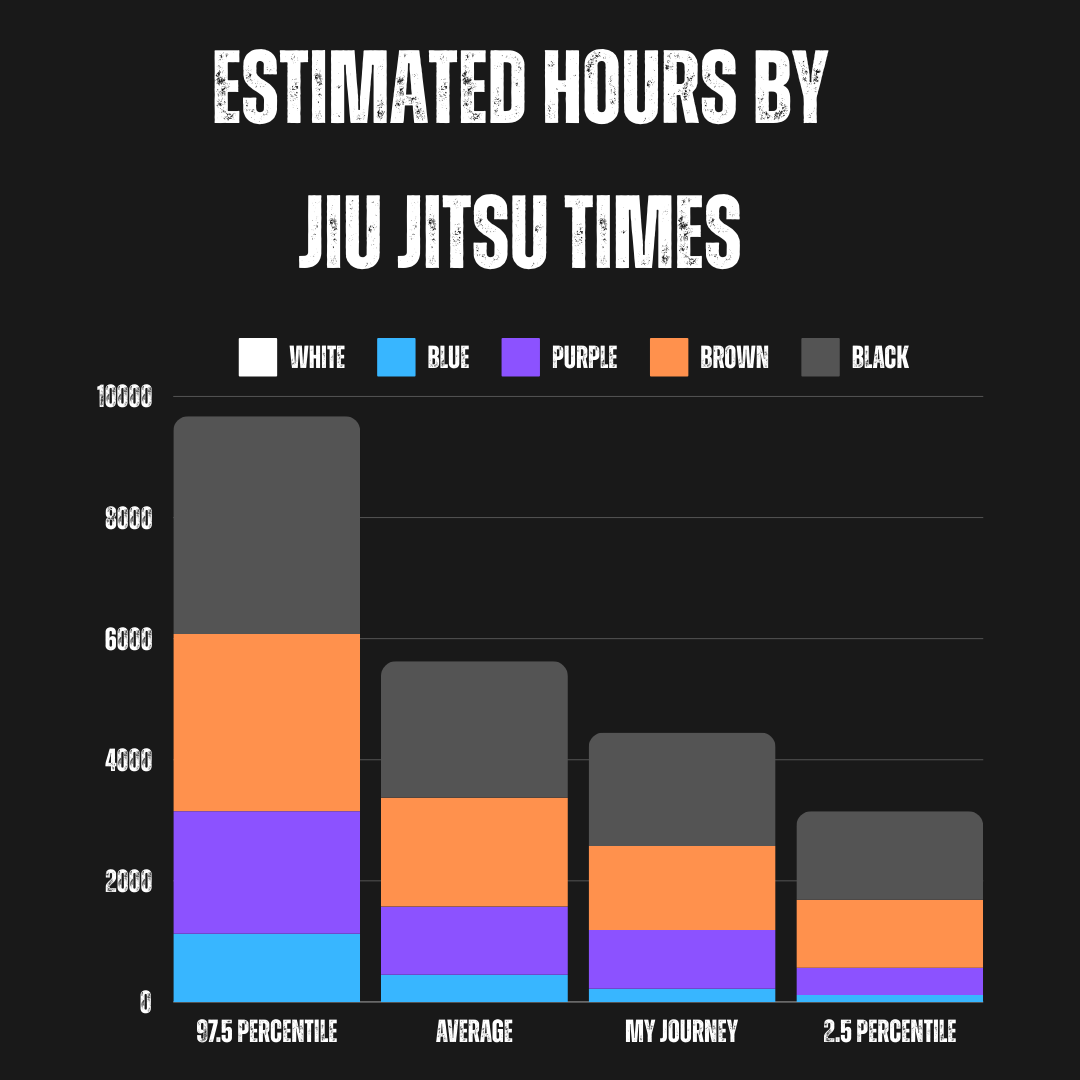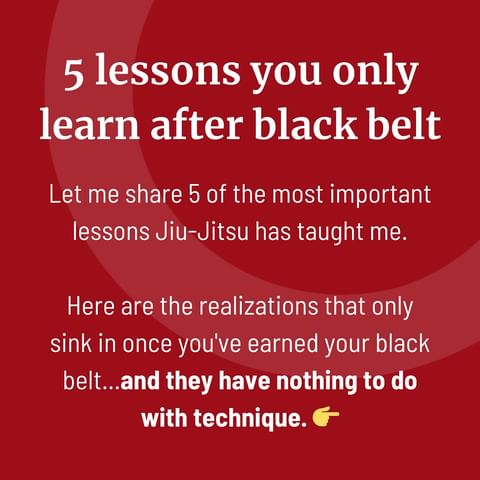What's in a Symbol - 5 Things I Learned Since Earning My BJJ Black Belt
As the expression goes, “a belt only covers 2 inches of your ass, the rest is on you.” One year ago I received my black belt in Brazilian Jiu Jitsu. Here are 5 things I’ve learned since then.
6/24/23
First, let’s review…
“How long does it take to get” a black belt isn’t a very good question. A better question is “What does it cost?” or perhaps, what does it cost to posses the skills a belt is supposed to represent? You could count my scars, arthritic fingers and toes, note my jacked up teeth and cauliflower ears; or we might use something like time as unit of measure.
In terms of “years”, I started training MMA in Spring / Summer 2010. That’s 14 years ago, but not all of those years were active. In fact, after training for about 3 years, I took a whopping 6 years off to lose (and find) myself in the mountains (climbing).
How someone uses a given year or hour may not be the same as another. But, my specific belt promotions looked this:
- Blue Belt: ~216 hours
- Purple Belt: ~971 hours (+755 since Blue)
- Brown Belt: ~1,389 hours (+418 since Purple)
- Black Belt: ~1,874 hours (+485 since Brown)
https://aesopian.com/blog/2013/03/08/how-long-it-takes-to-get-a-black-belt/
If you plotted those graphs on a line, you’d see something really interesting; that I was actually a bit slow to blue belt and about average to purple belt. However, something magic happened somewhere around that purple belt time. Note that I spent almost as many hours going from blue belt to purple belt (755) as I did to go from purple belt to black belt (903).
https://jiujitsutimes.com/putting-time-much-really-need/
One way to interpret this is that while I wasn’t starting from scratch in 2019 (when I started training again), I had a lot of rust to shake off and re-learning to catch up on. However, that process wasn’t wasted as I only spent a little over three years at purple and brown belt combined compared to over two years just to go from white to blue.
To me that means that pretty early on in my purple belt I “learned how to learn” better and truly became a “student of the game” rather than memorizing a certain vocabulary or collecting silver bullets.
What I’ve Learned Since Earning My Black Belt:
- Time is relative: We put too much emphasis on being rather than becoming.
Oftentimes a BJJ black belt is compared to earning an academic PhD. If you’re in graduate school, a PhD seems like the pinnacle. Though professionally, it’s literally only the start of your journey.
Maybe a BJJ black belt is not like a PhD, but more like trade school or perhaps even only a high school diploma in that a belt is only a vague representation of supposed skill and competence; a symbol that signifies you’re prepared to learn, ready to specialize, and capable of expressing yourself in the world.
By the time I earned my black belt I had spent about 1,800 hours on the mat over 8 years. If I continue at that rate for the next 35 years I’ll be a coral (red-black) belt and have about 10,000 hours of training. Maybe then I’ll have reached a level of “mastery.”
- Secrets hobble everyone: It’s worth investing in lower belts.
I abhor the days when cross-training was forbidden and instructors were advertised as having secret knowledge or a mystical, more pure, source. Not only is this indicative of a McDojo, but there’s a thing called the internet now.
This means that any blue or purple belt may have seen something fancy online and show — or even submit me with — something I’ve never seen before.
As instructors we owe it to our students to make our students better than us. I don’t hold anything back from my students in class; they get the best of my game and the best I can help them create for themselves.
Sometimes, I “regret” teaching them because it forces me to keep getting better, because they’re always on my heels — literally.
- Focus on what’s important.
Just because anyone with an Instagram (or Only Fans) account can publish whatever content they like, doesn’t mean you should consume it. Conversely, it doesn’t mean you should produce it either. Resist the rat race.
As our time preference grows increasingly higher — e.g. drive and desire for instant gratification — there’s a temptation to prioritize glamour over competence. People would rather look like something than actually achieve it.
Everyone wants to be famous, or more likely, the freedom and resources to do the things they see famous people doing. Confidence doesn’t come from “motivational” hype videos. It comes from experience. Experience teaches you that no one is infallible. Confidence then comes from knowing you will adapt and overcome, that you are capable of and willing to do so, no matter how sideways life gets.
I’ll admit, I still like a viral post. I like when my content gets “liked” and “shared”, but I’ve had to learn to be less attached to it.
- Study more competitions: there is endless (good and bad) instructional content.
This one has come to me more recently. I’ve always watched a lot of film. I’ve purchased many instrcutionals over the years, and as social media has become more ubiquitious, the quality of free (and high quality) content has risen dramatically.
However, I’m not sure that it is proportionate to the “bad” content. There are a lot of very skilled practitioners with at least one release on BJJ Fantatics, and probably a YouTube channel to boot. However, any Blue Belt with an cell phone can post “instructional” content on TikTok.
Further, it’s easy to get trapped in the theoretical rabbit hole. Like I said, there’s lots of great content for free online. But, how do you ever sort through all of it? You literally could not watch it all in a lifetime.
One solution is to focus on what has been tried and successful at the highest levels. What is working in the IBJJF worlds and ADCC matches; past and present?
The “trap” for me was that I may be “right” theoretically (a la instructionals), but I’m a step (or several) behind someone who is taking in the distilled information from competitions.
- Injuries are inevitable: do your best to prevent them and learn from them.
Jiu Jitsu is a contact sport, and a combative one at that. The “gentle art” is a misnomer and only relevant in that it is “gentle” compared to the repeated head / brain trauma of striking sports.
I’ve been very fortunate to avoid major injuries in the first 2,000 hours or so of my training. There have been various sprained knees and ankles, bruised ribs, and numerous cauliflower ear lancings, but nothing that’s kept me sidelined for more than a few weeks. However, recently I had the biggest scare yet, partially tearing my meniscus and MCL.
Jiu Jitsu is already hard, we’re literally learning how to destroy bones and joints. We don’t need to make it harder by recklessly training 100% competition speed every day. However, we do need to understand that if we’re adequately tested, there are always risks and on a long enough timeline the question of injury is “when” not “if.”
By “learning” I mean seize the opportunity to be more technical, watch more instructionals and competition matches, and become a better coach and teammate. Humans learn by doing dangerous things carefully, but they’re still dangerous.
For what it’s worth BJJ Mental Models made a similar post after I had gotten 4/5 of this list written. It’s nice to see other people thinking similarly and differently at the same time:
A post shared by @bjjmentalmodels
SavageZen Jiu Jitsu is a reader-supported publication. To receive new posts and support my work, consider becoming a free or paid subscriber.



